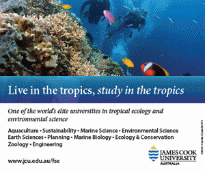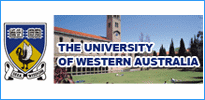Panama: Panama Education Profile 2012
2012/03/23
Panama Education Profile 2012
Panama’s educational system reflects the dual structure of the country’s economy and society. According to the 2007-2008 Human Development Report, government spending for education is moderate at 3.8% of GDP (2002-05; 18.6% of government expenditures in 2005). Educational spending is clearly biased towards institutions beyond the primary and secondary levels.
The low quality of public schools is a significant obstacle to the broadening of opportunities for personal and social progress, especially in rural areas. On average, rural children attend school for four years less than urban pupils. Deficiencies in teachers’ capabilities translate into disappointing achievements of schoolchildren.
At the primary level, 12% of the children stop attending classes before completing the 5th grade. According to the World Bank, the country’s overall adult literacy rate is 91.9% (2005), which seems far too optimistic in view of the country’s pronounced social inequalities. Panama’s miniscule expenditure on R&D (0.34% of GDP in 2005) reflects both the small size of the economy and the extraordinary weight of the service sector.
Education in Panama is compulsory for the first six years of primary education and the three years of Middle School. As of the 2004/2005 school year there were about 430,000 students enrolled in grades one through six (95% attendance). The total enrollment in the six secondary grades for the same period was 253,900 (60% attendance). More than 90% of Panamanians are literate.
As of 2004, more than 92,500 Panamanian students attended the University of Panama, the Technological University of Panama, West Coast University – Panama and the University of Santa Maria La Antigua, a private Catholic institution. Including smaller colleges, there are 88 institutions of higher education in Panama.
Public education began in Panama soon after independence from Colombia in 1903. The first efforts were guided by an extremely paternalistic view of the goals of education, as evidenced in comments made in a 1913 meeting of the First Panamanian Educational Assembly, "The cultural heritage given to the child should be determined by the social position he will or should occupy. For this reason education should be different in accordance with the social class to which the student should be related." This elitist focus changed rapidly under United States influencE
By the 1920s, Panamanian education subscribed to a progressive educational system, explicitly designed to assist the able and ambitious individual in search of upward social mobility. Successive national governments gave a high priority to the development of a system of (at least) universal primary education; in the late 1930s, as much as one-fourth of the national budget went to education. Between 1920 and 1934, primary-school enrollment doubled. Adult illiteracy, more than 70 percent in 1923, dropped to roughly half the adult population in scarcely more than a decade.
By the early 1950s, adult illiteracy had dropped to 28 %, but the rate of gain had also declined and further improvements were slow in coming. The 1950s saw essentially no improvement; adult illiteracy was 27 % in 1960. There were notable gains in the 1960s, however, and the rate of adult illiteracy dropped 8 % points by 1970. According to 1980 estimates, only 13 % of Panamanians over 10 years of age were illiterate. Men and women were approximately equally represented among the literate. The most notable disparity was between urban and rural Panama; 94 percent of city-dwelling adults were literate, but less than two-thirds of those in the countryside were—a figure that also represented continued high illiteracy rates among the country's Indian population.
From the 1950s through the early 1980s, educational enrollments expanded faster than the rate of population growth as a whole and, for most of that period, faster than the school-aged population. The steepest increases came in secondary and higher educational enrollments, which increased ten and more than thirty times respectively. By the mid-1980s, primary school enrollment rates were roughly 113 percent of the primary-school-aged population. Male and female enrollments were relatively equal overall, although there were significant regional variations.
Enrollments at upper levels of schooling had increased strikingly both in relative and absolute terms since 1960. Between 1960 and the mid-1980s, secondary-school enrollments expanded some four-and-a-half times and higher education, nearly twelve-fold. In 1965 fewer than one-third of children of secondary school age were in school, and only 7 percent of people aged 20 to 24 years. In the mid-1980s, almost two-thirds of secondary-school-aged children were enrolled, and about 20 percent of individuals aged 20 to 24 years were in institutions of higher education.
- Panama News
-
- AFGHANISTAN: Global growth will be disappointing in 2016: IMF's Lagarde
- PANAMA: Cobre Panama copper project to drive mining expansion
- PANAMA: Panama dismantles drug network linking FARC with Mexican cartel
- PANAMA: Panama tightens money-laundering regulations
- AFGHANISTAN: Revised IMF forecasts signal gloom on global economic outlook
- AFGHANISTAN: Oxfam Study Finds Richest 1% Is Likely to Control Half of Global Wealth by 2016
- Trending Articles
-
- EUROPEAN UNION: Two Remarks on the Turkey-EU Deal on the Migrant Crisis
- NIGERIA: Nigeria’s e-commerce industry shows growth potential
- KAZAKHSTAN: No decision yet on financing production increase at Tengiz oilfield
- UNITED KINGDOM: Cameron urges Britons to register for EU vote
- JAPAN: Obama Japan Trip 2016: US President Calls For End To Nuclear Weapons On Historic Hiroshima Trip
- CHINA: Macau businessman wants to take companies from China to Cabo Verde










